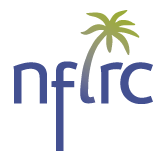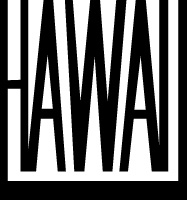vol. 2, no. 1
Articles
Static Palatography for Language Fieldwork
Victoria B. Anderson
This article describes how to do static palatography, a way to collect articulatory records about speech sounds that can be used either in the field or in the laboratory. Palatography creates records of the contact pattern of the tongue on the roof of the mouth during an utterance, and when the actual dimensions of the palate are known, can be a rich source of data about articulatory strategies. This paper (1) instructs the reader about the tools and methods needed to collect palatograms (records of contact on the roof of the mouth) and linguograms (records of contact on the tongue); (2) shows how to collect three-dimensional information about the size and shape of a speaker’s hard palate; (3) illustrates how to incorporate these three types of records into life-size, anatomically accurate midsagittal diagrams of speakers’ articulations; and (4) demonstrates how palatograms can be measured (and how linguograms can be categorized) in order to statistically compare articulatory strategies across speech sounds and/or across speakers.
Diglossia, Bilingualism, and the Revitalization of Written Eastern Cham
Marc Brunelle
Eastern Cham is an Austronesian language spoken in south-central Vietnam. The sociolinguistic situation of Eastern Cham communities is characterized by a combination of diglossia and widespread Cham-Vietnamese bilingualism. These factors have had an important impact on the effectiveness of recent and controversial attempts to standardize and revitalize the traditional Cham script, akhăr thrah. The spelling reforms and first language programs currently implemented are described, and the reactions from the community are discussed. Various possible paths for the development of literacy in Eastern Cham are proposed and the impact of language attitudes and ideology on their chances of success are briefly reviewed.
Writing an Endangered Language
Valérie Guérin
This paper reports on Mavea, an Oceanic language spoken in Vanuatu. The state of endangerment of Mavea is first evaluated using UNESCO’s framework for assessing language vitality. The framework’s nine criteria are applied to Mavea, and the results demonstrate that the language is unquestionably endangered. If this language shift is to be reversed, one of the first steps in doing so is to document the language. Materials in and on the language have the potential to restore the language’s prestige, or to restore its usage through vernacular literacy. In the case of Mavea, many community members became eager to see printed versions of the materials I had collected during the documentation process, but the language had no writing system. Thus, this paper additionally describes the Mavea community’s efforts to establish orthographic conventions for their language and their desire to disseminate the resultant written materials throughout the community. This grassroots interest in vernacular literacy is argued to be a beneficial step towards reversing negative language attitudes.
Researching and Documenting the Languages of Tanzania
Henry R. T. Muzale and Josephat M. Rugemalira
This paper describes the challenges that researchers have encountered during six years of implementing a research and documentation project for the languages of Tanzania. It discusses the methods evolved by the project researchers for the production of a language atlas for Tanzania and presents preliminary results from the research. The results show that the language with the most native speakers, Sukuma, has twice as many as its closest rival, Kiswahili. The paper also presents an account of the research for documenting the grammar and vocabularies of the languages of Tanzania. The expected impact of this particular form of documentation, as well as the limits, are discussed. It is argued that a language needs to be unchained from politically imposed shackles in order for a society to reap the full benefits of its cultural resources.
Rescuing Legacy Data
Thomas Schmidt and Jasmine Bennöhr
This paper discusses issues that arise in the transformation of electronic language data from outdated to modern, sustainable formats. We first describe the problem and then present four different cases in which corpora of spoken language were converted from legacy formats to an XML-based representation. For each of the four cases, we describe the conversion workflow and discuss the difficulties that we had to overcome. Based on this experience, we formulate some more general observations about transforming legacy data and conclude with a set of best practice recommendations for a more sustainable handling of language corpora.
Language Documentation and Archives in South America
Frank Seifart, Sebastian Drude, Bruna Franchetto, Jürg Gasché, Lucía Golluscio, and Elizabeth Manrique
This paper addresses a set of issues related to language documentation that are not often explicitly dealt with in academic publications, yet are highly important for the development and success of this new discipline. These issues include embedding language documentation in the socio-political context not only at the community level but also at the national level, the ethical and technical challenges of digital language archives, and the importance of regional and international cooperation among documentation activities. These issues play a major role in the initiative to set up a network of regional language archives in three South American countries, which this paper reports on. Local archives for data on endangered languages have recently been set up in Iquitos (Peru), Buenos Aires (Argentina), and in various locations in Brazil. An important feature of these is that they provide fast and secure access to linguistic and cultural data for local researchers and the language communities. They also make data safer by allowing for regular update procedures within the network.
Notes from the Field
Minangali (Kalinga) Digital Wordlist: Presentation Form
Kenneth S. Olson, Glenn Machlan, and Nelson Amangao
Technology Reviews
Review of FR-2LE Digital Audio Recorder
Reviewed by Laura Dimock
Review of Kirrkirr
Reviewed by James McElvenny
Review of Emu
Reviewed by Briony Williams
Book and Film Reviews
Review of English on the Bonin (Ogasawara) Islands
Reviewed by Joel Bradshaw
Review of The Tailenders
Reviewed by Joseph E. Grimes
Book Notices
Naman: A Vanishing Language of Malakula (Vanuatu)
Reviewed by Emily Bartelson
Language Planning and Policy in the Pacific. Vol. 1: Fiji, the Philippines, and Vanuatu
Reviewed by Trisha Shipman
vol. 2, no. 2
Articles
Locus Equation Analysis as a Tool for Linguistic Fieldwork
Caleb Everett
Locus equations are linear regressions based on F2 formant transitions from vowel onsets to vowel midpoints. The F2 value of the onset of a given vowel can be plotted on the y-axis, with the F2 for the vowel’s midpoint plotted on the x-axis. Locus equations are derived from numerous F2 onset-F2 midpoint plots of this type. Each locus equation is associated with a particular consonant, which precedes the particular vowel tokens plotted according to F2 transition. Locus equations provide data on the patterns of CV coarticulation characterizing particular consonants. Studies in laboratory settings have demonstrated the efficacy of locus equation analysis for exploring such coarticulation patterns. However, locus equation analysis has generally not been exploited as a tool for linguistic fieldwork. This study presents an exception, as the author presents various locus equations based on data from Karitiâna, an endangered Amazonian language. These equations, based on acoustic data gathered in the field, reveal language-specific patterns of coarticulation. The results suggest that, even in remote non-laboratory settings, locus equations can be applied in a straightforward manner in order to provide useful insights into a language’s sound system.
Capturing Chaos: Rendering Handwritten Language Documents
John Henderson
This paper demonstrates how the nature of a source language document, and the broad goals set for the usability of the content, can direct the process of creating digital language documentation from that source. Gerhardt Laves’s handwritten 1931 field notes on Noongar language and culture of southwestern Australia were retranscribed using an XML markup scheme and processed in various ways using XSLT. The central goals were to produce usable resources for community language activities and for linguistic and other scholarly analysis. A specific requirement for a rough facsimile representation, in recognizing that some of the graphic form of the notes was content that should be represented in the markup, contributed significantly to the specification of the markup scheme. Consultation with the Noongar community led to the recognition of Noongar families’ rights in the materials and the recognition of culturally sensitive content, which together led to a requirement for multiple versions with varying content. The general nature of these handwritten notes also raises important issues of reliability and attribution that must be handled in the markup scheme.
Prosodic Description: An Introduction for Fieldworkers
Nikolaus P. Himmelmann and D. Robert Ladd
This article provides an introductory tutorial on prosodic features such as tone and accent for researchers working on little-known languages. It specifically addresses the needs of non-specialists and thus does not presuppose knowledge of the phonetics and phonology of prosodic features. Instead, it intends to introduce the uninitiated reader to a field often shied away from because of its (in part real, but in part also just imagined) complexities. It consists of a concise overview of the basic phonetic phenomena (section 2) and the major categories and problems of their functional and phonological analysis (sections 3 and 4). Section 5 gives practical advice for documenting and analyzing prosodic features in the field.
Fieldwork and Documentation of Speech Genres in Indigenous Communities of Gran Chaco: Theoretical and Methodological Issues
Cristina Messineo
This paper presents some theoretical and methodological reflections on documenting and analyzing texts gathered from indigenous communities, based on my experiences working with communities in the Gran Chaco region of Argentina. The purpose of this essay is to discuss how the selected fieldwork model, the methods of data collection, the degree of access the researcher has to the material, and the type of relationship that develops between the investigator and the consultants all influence the type and quality of the data. In my experience, a collaborative approach that relates the description of linguistic structures to the study of discourse as verbal art greatly enriches the documentation of endangered languages.
Electronic Reference Grammars for Typology: Challenges and Solutions
Sebastian Nordhoff
Electronic publication offers new possibilities for the creation and exploration of grammatical descriptions. This paper lists values influencing the structure of electronic grammatical descriptions. It then investigates challenges and solutions for a grammar authoring software trying to adhere to these values in the domains of data quality, creation of the description, and exploration of the description. The paper closes by discussing possibilities for the standardization of grammatical descriptions on a macroscopic level, complementing the standardization efforts on a more fine-grained level like GOLD or CRG.
Technology Reviews
Review of Phonology Assistant 3.0.1
Reviewed by Mark Dingemanse
Review of Emdros: The Database Engine for Analyzed or Annotated Text
Reviewed by Kirk E. Lowery
Book Reviews
Review of Essentials of Language Documentation
Reviewed by Nicholas Evans
Review of An Introduction to Contact Linguistics
Reviewed by Sue Fox




